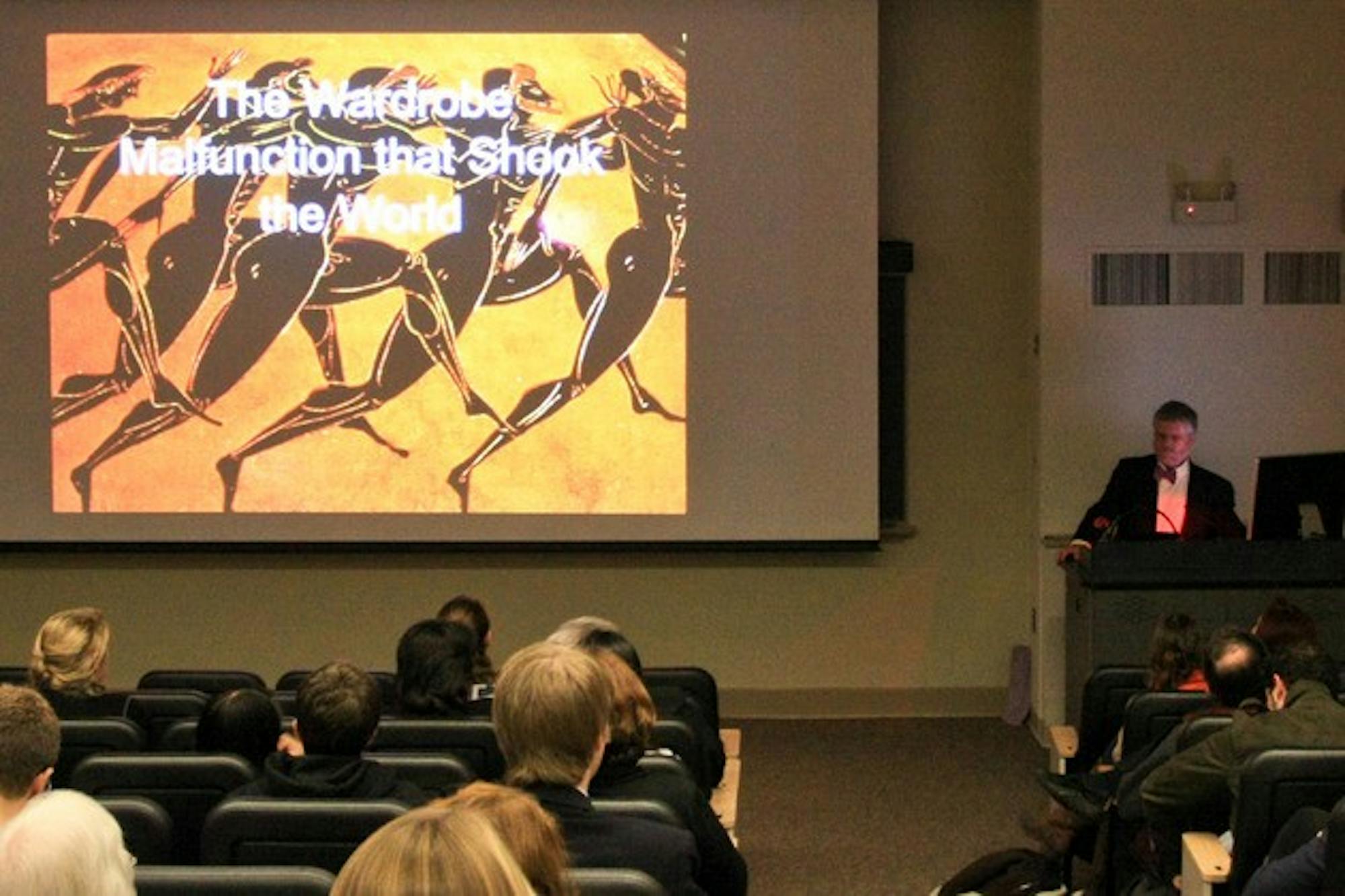Ancient Greek athletes who participated in the track, field and combat events competed in the nude, Stewart said. Chariot racing participants "sensibly" wore clothes due to logistical considerations, he said.
The practice of competing in the nude was "unique" to Greece at the time, according to Stewart.
"Evidence shows that sports were practiced elsewhere but competitors wore belts or loincloths," he said.
Nude competition began when Spartan athletes took off their clothing to rub their bodies with olive oil following exercise, according to Stewart.
"The Greeks gradually adopted this practice to show the uniqueness of their society and separate themselves from the barbarians around them," Stewart said. "The Greeks once thought it was shocking and ridiculous to see men naked before adopting the practice."
Art history and classics scholars continue to debate the exact date and origin of nude athletic competition, Stewart said. Scholars frequently reference the story of Orrhippos, a runner from Megara, Greece, who intentionally let his loincloth slip in 652 BCE since he thought it easier to run naked, Stewart said.
"His epitaph alleges that the whole thing was wardrobe malfunction,' like the term Justin Timberlake used after the Super Bowl," Stewart said to a laughing audience.
Sir Isaac Newton first challenged the traditionally-accepted origin date in an unpublished pamphlet released in 1925, Stewart said. Newton studied eclipses to determine dates, and deduced that the first nude athletes originated in the 7th century BCE, according to Stewart.
Since records of the Olympics from before the Roman period are not dated, historians must rely on archeological evidence to study the history of the Olympics and the attire of the athletes, Stewart explained.
"Suggested dates for the first Olympics range from 776 to 700 BCE, under the assumption that first Olympic wells were dug around 700 BCE and these wells served athletes," Stewart said. "Someone at the Olympics did drop their pants and did so during the Archaic period."
Records suggest, however, that the trend was "slow to catch on" in more conservative communities, he said. Nakedness appeared in earlier Greek art to distinguish gender when human figures were depicted using abstract geometric shapes, Stewart said.
"Nakedness had been the default setting for men, and clothing the default setting for women," he said. "She is a product of nature and her sexuality is a disaster waiting to happen, so she is constrained by a girdle and held back by man."
Clothed figures became fixtures in archaic art scenes dating from 750 to 480 BCE, which suggested a new desire to visually separate athletes.
"Why would one want to do this unless to contrast the naked athlete and clothed bystander?" Stewart said.
In Sparta, athletes "made a fetish" of practicing athletics in the nude, according to Stewart.
"All Spartan boys over age 10 stripped to exercise as an expression of the increasingly egalitarian male warrior culture," Stewart said. "Nakedness was a symbol of their intense physical training, the unbreakable male bonding expected between members and a marker of transition from boy to male warrior."
In 510 BCE, "sporting fever gripped Athens," as reflected in a rapid increase of artwork depicting nude athletes running and competing as jockeys on horseback, Stewart said.
As the notion of practicing athletics nude acquired a "mythological pedigree," two new athletic commemorations developed the statues and written odes to celebrate the victor, Stewart said.
"The victor statue remains on its base as a memorial, while the victory ode circulates the athlete's name and fame as no statue can," he said.
Although scholars can learn much about nudity in the Olympics from archeological records and art, much remains unknown, Stewart said.
The lecture was co-sponsored by the art history department, the classics department and the Hood Museum of Art.




